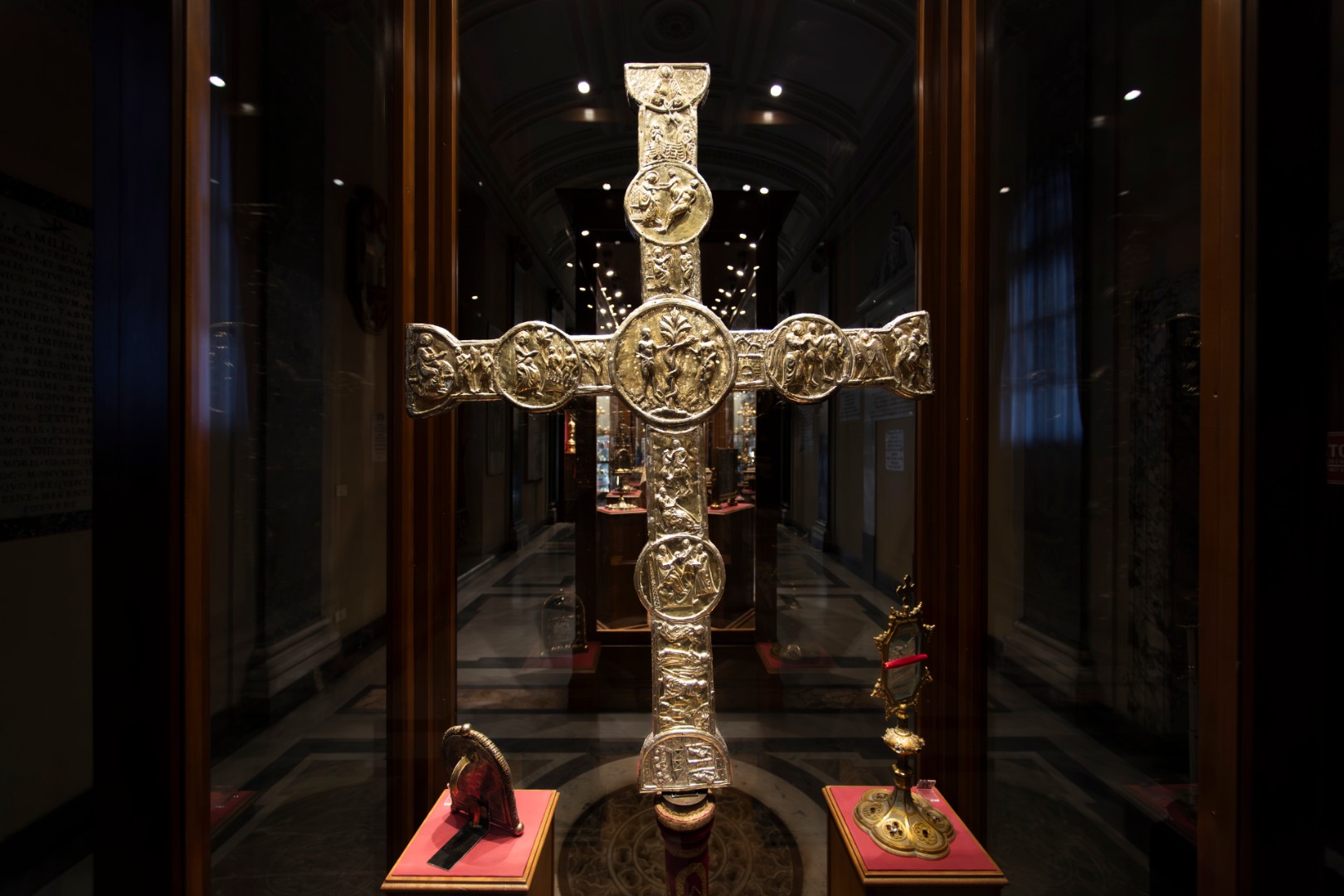One of the jewels of the Basilica of Saint John Lateran is the Constantinian Cross. Produced between the thirteenth and fourteenth century, it was used at the opening of papal processions, alongside the two candles that accompanied it. Of great importance for the history of medieval art, it is probably the only example of the goldsmith’s art of such significance in the Roman sphere prior to the exile in Avignon.
In the Treasury Museum, the gilded silver plates that compose the cross, engraved with the entire Genesis cycle and the New Testament episodes that echo it, immediately stand out. In the centre, as the main episodes, there is the tondo with the stories of Original Sin on one side and with the Crucifixion on the other. The Old Testament tondo features the imposing tree of the knowledge of good and evil, with the serpent wound around it, and Adam and Eve next to it. In the opposite tondo, on the other hand, the Lord stands above, while Mary and John stand at the foot of the cross. The event of the Lord's death has, in fact, redeemed man forever, from the state to which Adam had condemned him. Again, the Old and New Testament interact with each other because, while a woman had fallen for the deceptions of the serpent, now it is another, Our Lady – figure of the Church – who remains steadfast in the safe harbour of the will of God. The emphasis the goldsmiths wanted to confer to the event of the redeeming death of Christ, prefigured in the episodes of Abel, Isaac, Jacob and Joseph, carved in the arms of the cross, is therefore clear. The figures mentioned are in fact read typologically and seen as Old Testament prefigurations of the Lord.
Everything orbits around the central event of the Crucifixion, and it is organized around homogeneous narrative nuclei, but not in the proper succession of scriptural episodes. This is certainly due to the numerous modifications that the Constantinian Cross has undergone over time, but it also reflects a very precise iconographic choice, in vogue in the Middle Ages: indeed, between the eleventh and twelfth centuries, in Umbrian-Roman art, there was a tendency to arrange the artistic narration of biblical cycles using the criterion of typological narration. Thus, the relationship between the Old and New Testaments, between Genesis and the Gospel, which, facing each other, weave the fabric of the story of Salvation, was prominent.


